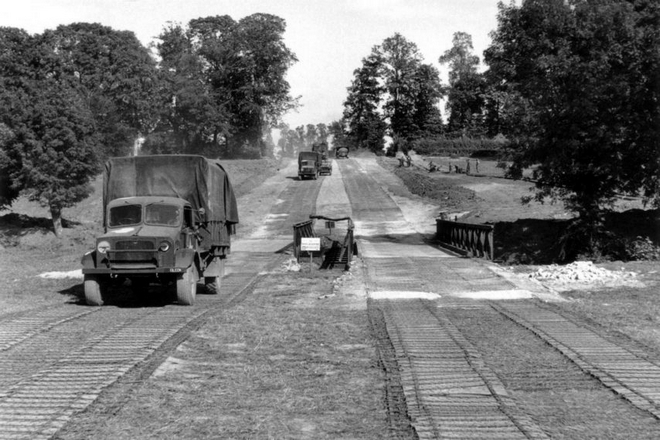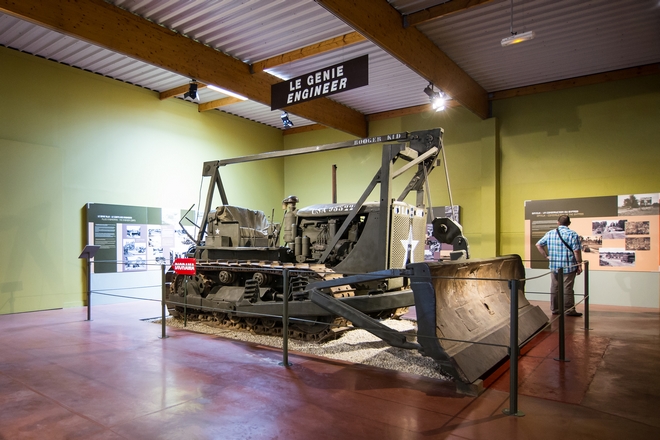
Share
On 7 June 1944 British units entered Bayeux with no fighting and liberated the town. The same could not be said for Caen and its surroundings where the attackers encountered ferocious resistance. Two attempts to bypass the city of Caen, which controlled the routes towards the Seine and Paris, met with failure.
Meanwhile, the American troops’ objective was to take Cherbourg in order to have a deep water port. On 17 June 1944 the Americans reached Barneville-Carteret. But this caused the Germans to retreat to the north of the Cotentin peninsula. It took until 26 June 1944 to capture the town of Cherbourg, but the harbour was completely destroyed.
At the other end of the Cotentin front, the Americans took Saint-Lô on 18 July 1944 after the difficult and deadly War of the Hedgerows south of Carentan. A week later, with the arrival of reinforcements and an improvement in the weather, massive airborne intervention became possible.
General Patton launched Operation Cobra on 25 July 1944 and pushed into the enemy lines. The operation was a success and allowed a breakthrough to Avranches and on into Brittany. On 6 August 1944, the Germans launched a counter-offensive from the Mortain area towards Avranches to cut off the American advance. Met with Allied carpet bombing, this enemy operation failed. The German armies soon found themselves surrounded in the Falaise Pocket and retreated towards Paris. By the end of August 1944 the Battle of Normandy was over. From then on, the Allies advanced rapidly towards the east, Brittany and the Loire region…

Military engineers were remarkably inventive during the conflict. Many of their feats of civilian and military construction are still part of our landscape. In addition to the artificial harbours and Bailey bridges, they were responsible for the first ring road at Bayeux, the “Bayeux merry-go-round” or Bypass. This enabled traffic to avoid the narrow streets of the medieval city and thus facilitated the transport of supplies and the traffic of soldiers and equipment towards the front. [Photo: Archives Memorial Museum of the Battle of Normandy]

During the Battle of Normandy operations, military engineering units were vitally important in securing victory. They are honoured in the museum: one of their iconic machines, a Caterpillar D7 Bulldozer, is exhibited in a room in the Memorial Museum of the Battle of Normandy. These machines were essential for clearing the ruins of bombed towns and were used above all by the British engineers during construction of the Bayeux Bypass.